Ring Stick Up Cam Review and Pricing
Ring’s most versatile camera is packed with highly customizable features for a very middle-of-the-road price.

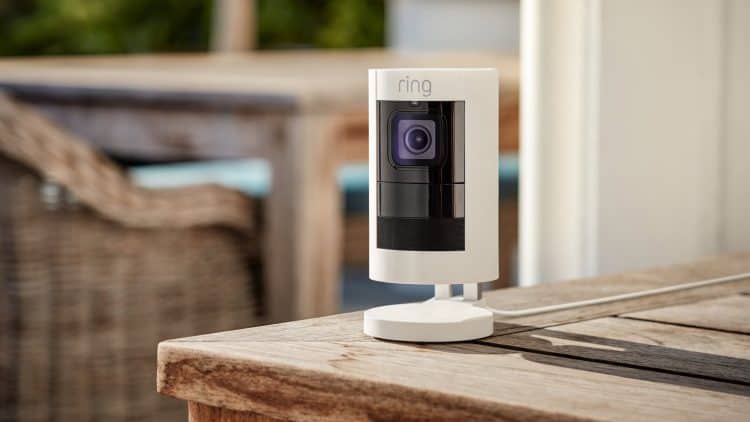
SafeHome.org may receive compensation from some providers listed on this page. Learn More
We may receive compensation from some providers listed on this page. Learn More
Ring’s most versatile camera is packed with highly customizable features for a very middle-of-the-road price.


Editor’s Note: Ring’s stick up camera is versatile, but if you want a range of devices to choose from, we recommend SimpliSafe. Their devices are easy to set up and can integrate with other products. Plus, you can get a free camera and 50 percent off a new plan right now.
Indoor security cameras can be a mixed bag: they can show us that all is well, calm our anxieties and fears, and help us sleep better.
Or, they can do the opposite and show us how vulnerable we are.
Above all, though, they can teach us lessons (like how you should always take your dog out before going to sleep at night… or else!). And that’s where we’d like to start today, with our hands-on review of the classic Ring Stick Up Cam, which we just added to our lineup of security cameras in and around our home.
Stay with us as we unbox, install, set up, and run through our tests of our new Stick Up Cam. Let’s see if this versatile device makes sense for you and your home.
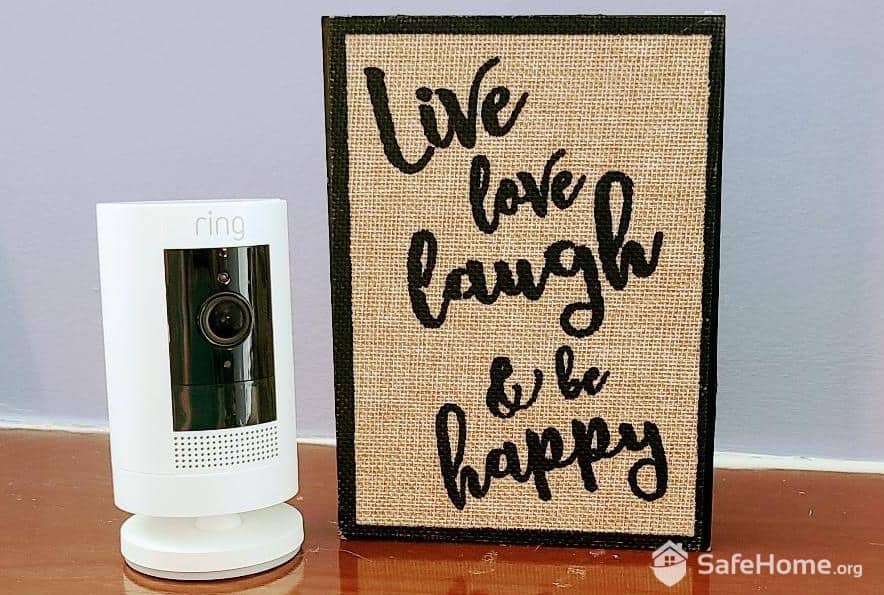
Ring Stick Up Cam
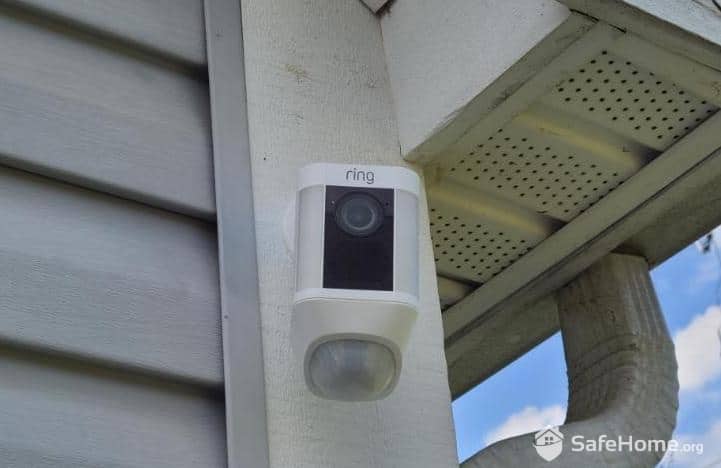
Ring Spotlight Cam is also a Stick Up Cam
Ring, the Amazon-owned1 security powerhouse largely credited with redefining home security, offers four options in its line of Stick Up Cams:
| Ring Stick Up Cams | Camera Type | Price |
|---|---|---|
| Stick Up Cam Battery | Wireless, battery-powered | $99.99 |
| Stick Up Cam Plug-In | Wired, constant power | $99.99 |
| Stick Up Cam Solar | Wireless, solar panel + battery pack | $148.99 |
| Stick Up Cam Elite (for 2nd Edition) | Power over Ethernet (PoE) | $199.99 |
In a nutshell, the Stick Up Cam Battery uses a quick-release battery pack. The Stick Up Cam Plug-In needs to be — you guessed it — plugged into a standard power outlet. The Stick Up Cam Solar comes with a solar panel, so no battery or wires are needed. And we like that Ring also offers an Elite version, which comes with a Power over Ethernet2 (PoE) adapter that plugs right into your router.
And for lighting and surveillance all in one, the Ring Spotlight Cam and Floodlight Cam for outdoor use that use the same technology and deliver the same reliable performance as the Stick Up Cam but with convenient long-range LED lighting.
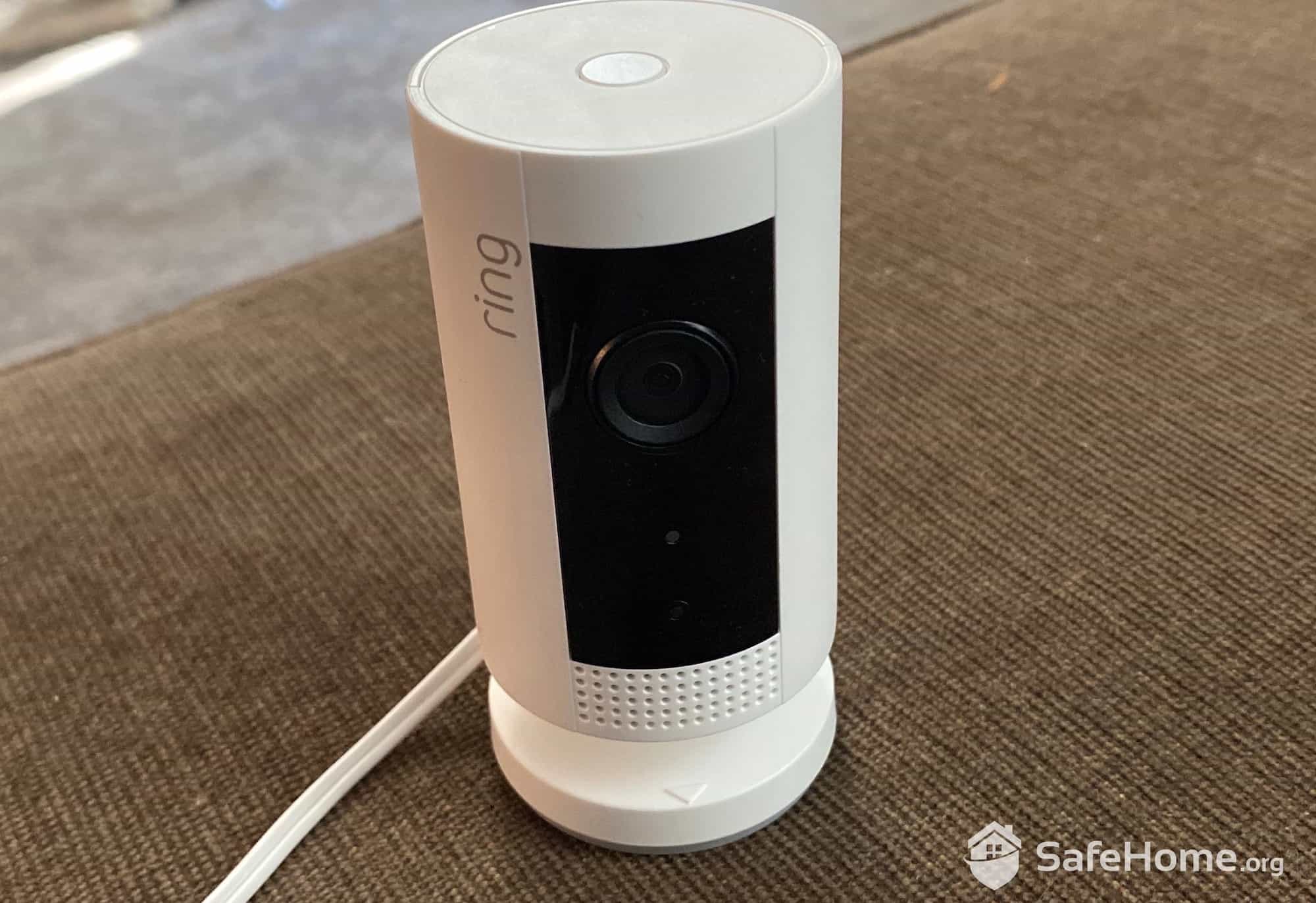
Ring Indoor Cam
We’ve got those two cams proudly illuminating our backyard and driveway as we speak. And if you’re interested, our full Ring camera review takes a deeper look at how the whole Ring system worked together in our home.
But if you’re looking to add on more indoor cameras, we also recommend checking out Ring’s Indoor Cam. This model is smaller than the Stick Up – just under 3 inches, not including the stand – but contains many of the same features, including a wide field of view and night vision. But, unlike Stick Up Cam, Indoor is plug-in only, which means you’re somewhat restricted in where you can position it.
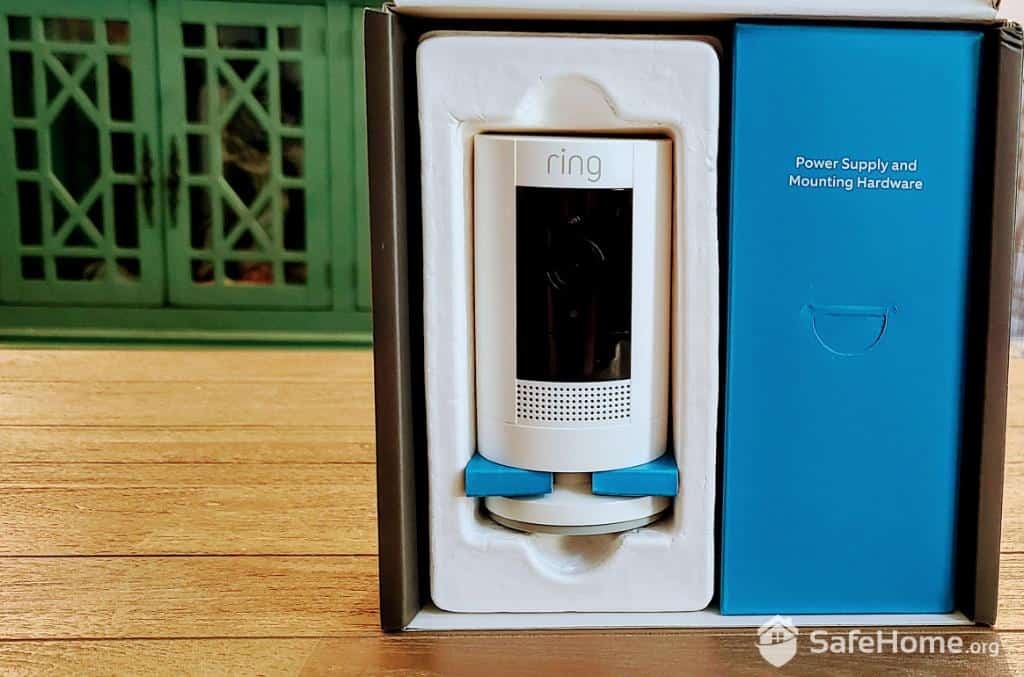
Ring Stick Up Cam Battery Packaging
As we already have five Ring cameras installed, we were excited to see how our Stick Up Cam – Ring’s most versatile camera and one of the easiest to install – would help us round out that so-called “Ring of Security” the brand is famous for.
We decided, for starters, to give this camera the stairway treatment. There’s a lot of traveling that goes on in this area of our home; with two middle-school-age kids and one very active puppy, we knew we’d see plenty of activity from this vantage point.
So we powered on our camera, added it as a new device to the app, and used our smartphone to scan the QR code on the back of our camera. Then, we followed the prompts, which included waiting a few minutes for the firmware to update, then watched as the camera synced to our smartphones. The whole thing took all of five minutes, and just like that, we were in business.
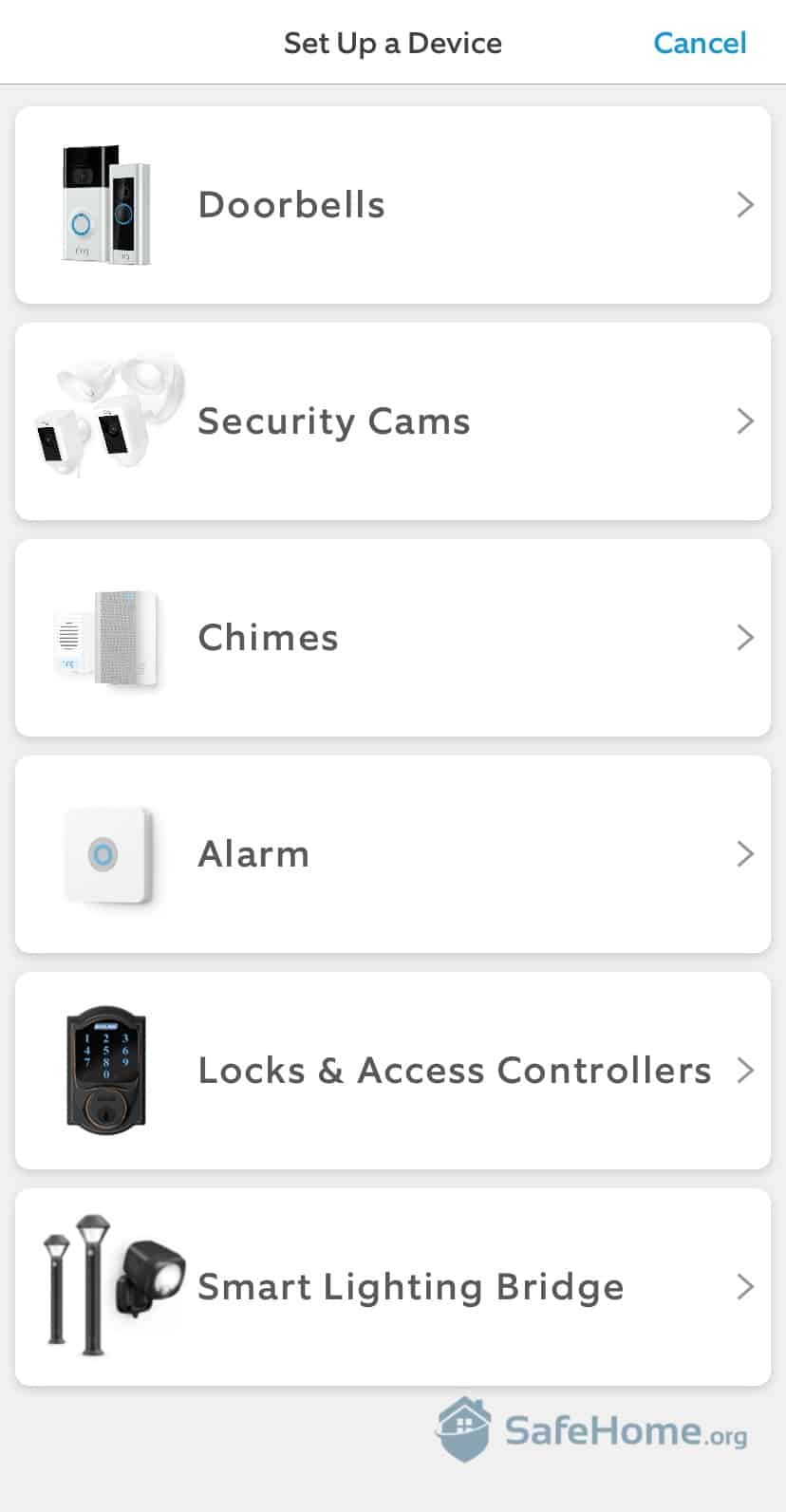
Ring Setup in App
Now, it was time to see how our new cam would fare in everyday household scenarios. For instance, why does our dog regularly wake up at least once in the middle of the night, go downstairs, and return hours later? Where does he go? What mischief is he getting into?
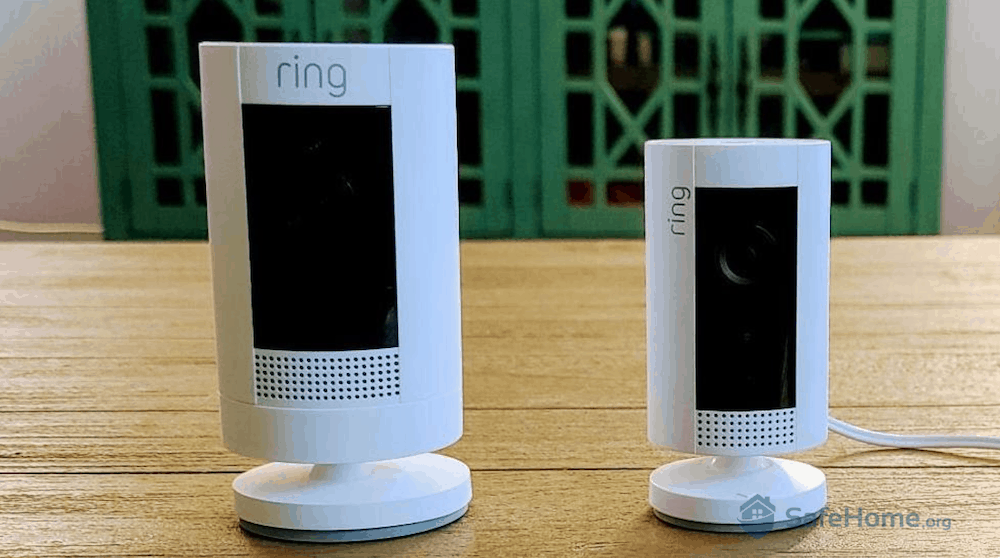
Ring Stick Up Cam (left) compared to Ring Indoor Cam (right)
To solve our everyday household mysteries, we decided to position our Stick Up Cam on a shelf above our stairway landing. To do this, we first removed the rechargeable battery from the box and plugged it into our wall, via the included charging cable.
Pro Tip: Stick Up Cam Battery comes with a Quick-Release Battery Pack, but you can also purchase an Indoor/Outdoor Power Adapter to plug your camera into standard power outlets. This way, your Stick Up Cam Battery will be powered by the adapter and will use the battery as backup in case of a power outage.
We chose to place our camera on a flat surface and forgo the included mounting plate and screws to install our Stick Up Cam. We did this because we knew we’d get bored with our camera’s initial location and would want to move it around our home. Consider it a pro tip!
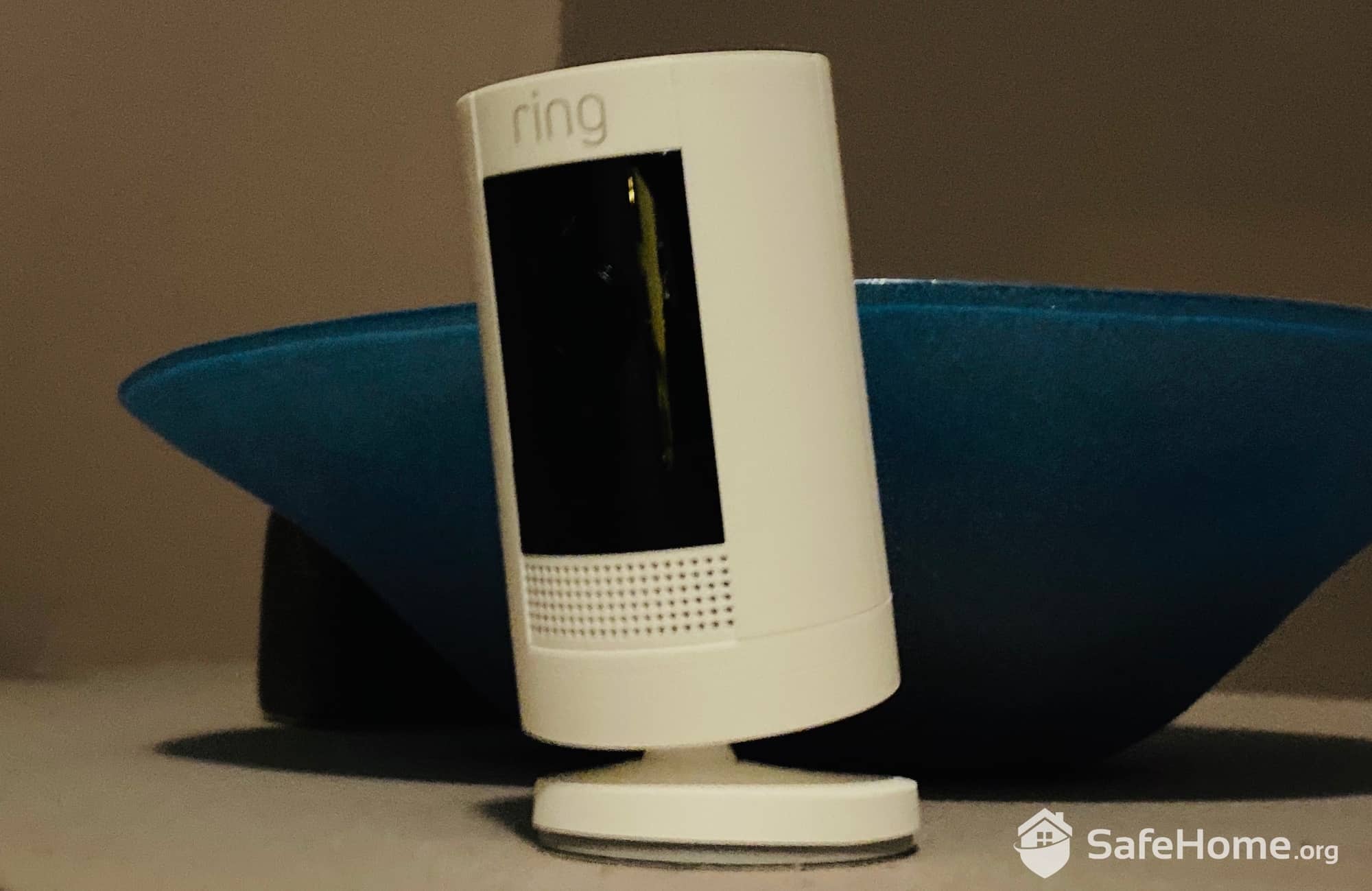
Ring Stick Up Cam Close Up
Then, we tested out a few angles by tilting and swiveling the body of the camera above its support stand, making sure the initial placement would yield the view we were looking for.
Pro Tip: The Stick Up Cam has a 140-degree field of view, which is the industry average. But it doesn’t pan around the room to track motion like the Wyze Cam Pan or other similar models do. So finding viewing angles might take a bit longer.
All told, with a camera like this, there’s not much prep work involved. As busy parents and professionals, we truly appreciate this level of simplicity and convenience, and we think you will, too.
First, a word of advice: You do not need technical expertise to use a Ring camera. That ease of use is exactly what’s made the brand a powerhouse in the industry for so long.

Ring Stick Up Cam
We do, however, recommend spending some time getting to know Ring’s app once you’ve synced it with your camera to understand all the functions and features. We do this with every camera, even if we’re already familiar with the app. Otherwise, we feel like we wouldn’t really be harnessing the full potential of some of the best cameras we’re reviewing.
For our testing of the Stick Up Cam, we decided to turn to our original “Curious Incident of the Dog in the Night-Time.” We’ll also touch on how the Ring Stick Up Cam can help to keep service providers honest — you know, nannies and contractors that you might welcome into your home. And how it can capture burglars in the act. But as they say, first things first!
On the first night, things stayed quiet. But on the second night, after moving the camera to another spot, we recorded motion indicating that the dog, our 10-pound poodle mix with a powerful set of lungs and a serious Napoleon complex, was embarking on his nightly trek.
And this time, we saw what happened when he reached his destination.
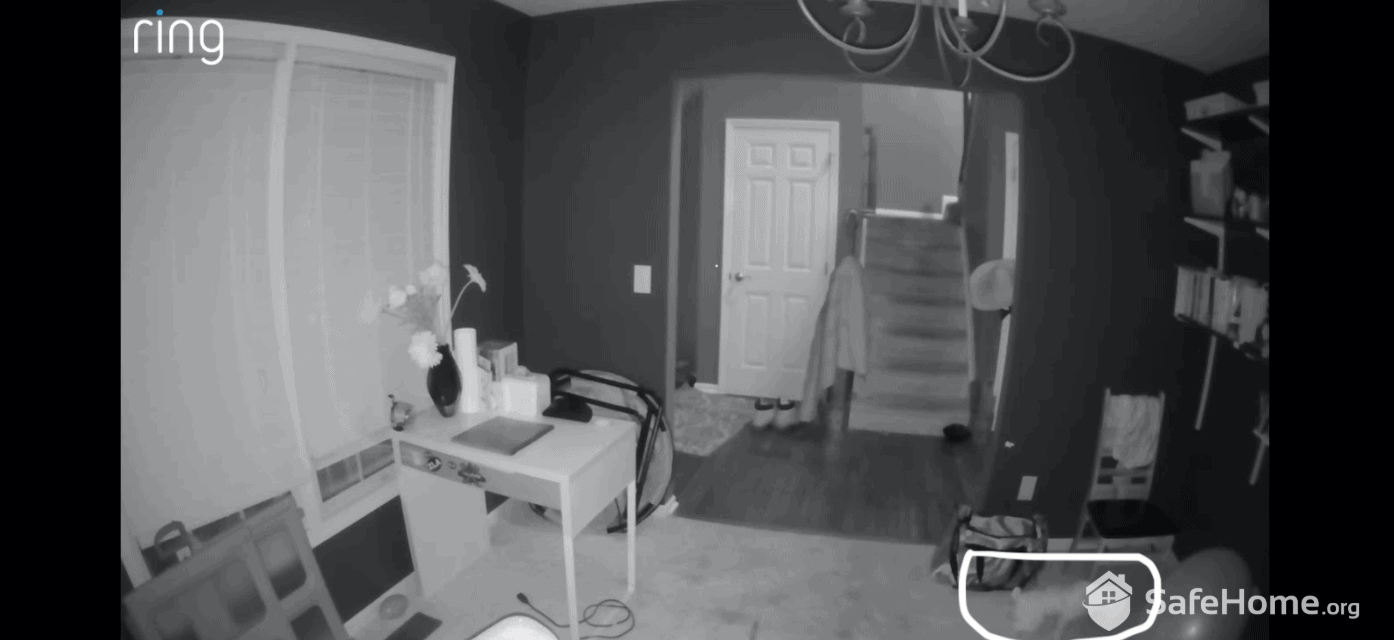
We’ve located the suspect, in the lower-right corner.
Aha! Caught ya! And yes, it’s exactly what it looks like – he’s relieving himself on our office carpet!
We discovered this in the morning, and we admit we probably wouldn’t have known about it otherwise; we truly thought we had adequately house-trained this dog and that our days of scrubbing up stains were behind us.
So far with this camera, we learned that we were going to bed without making sure we’d given our dog enough chances to go outside and relieve himself. But we’re the type of folks who learn from our mistakes; we simply added a short walk to our nightly routine before bed. Mystery solved!
But that was just one scenario. What we love about the Ring Stick Up Camera is not just that it can capture our dog’s unsavory behavior; it’s that it can be informative in so many other areas like this, if you know how (and where) to use it.
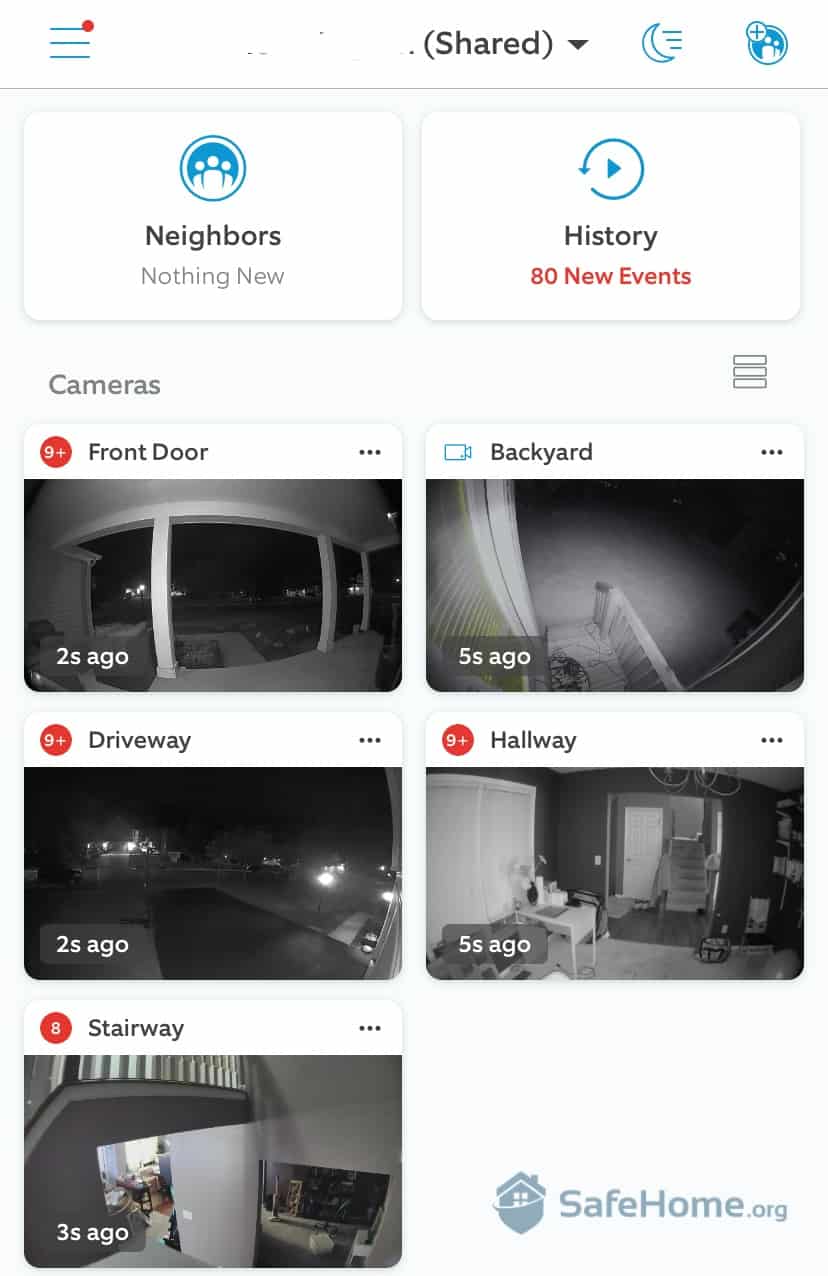
Ring App Dashboard – Night Vision
And, for more serious threats around your home, we feel confident that the Stick Up Camera would hold up as an all-around reliable and powerful line of defense against intruders, too.
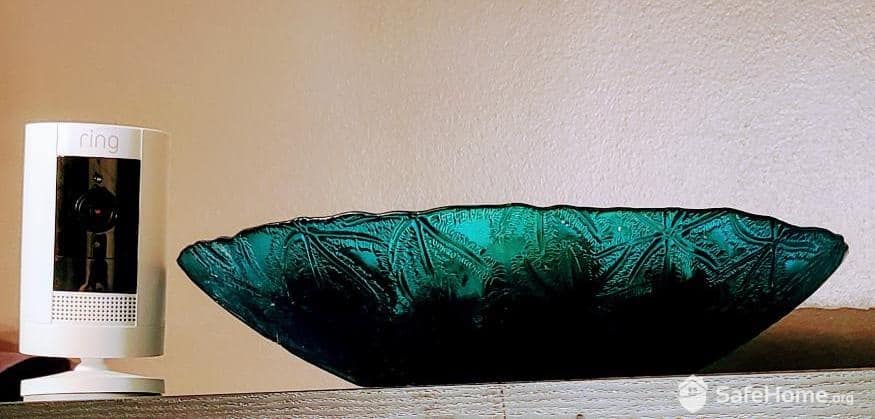
Ring Stick Up Camera
Our Ring Stick Up Cam is not the only DIY camera on the market; we know that a handful of other brands have produced cameras that consistently earn high marks in convenience, ease of use, and DIY installation.
Blink’s wire-free cameras, for instance, both offer indoor/outdoor cams that can be “stuck” to surfaces in the same way Ring cameras can. But combined with the highly customizable smartphone controls offered in the Ring app, we found that the Stick Up Cam has quite a bit over the competition.
With the Ring Stick Up Cam, we were able to use our smartphones to view live video, speak to others in our home using two-way talk, and view live recordings of activity in our home. And all of it was extremely easy to customize, thanks to the Ring app. Keep reading to learn about our favorite (and not-so-favorite) things about the Stick Up Cam.
Although Ring isn’t quite as fast or tech-heavy as its rival, the slightly pricier Nest Cams, when it comes to instant alerts, we liked how our classic Stick Up Cam still came through when it mattered most. Sure, we had to wait two or three seconds to view video after we got an alert, but we’ve learned in our experience with testing and reviewing these cameras that the speed of this process is sometimes dependent on external factors that have nothing to do with the camera itself.

Ring Display Delay
This, we’ve learned, is usually dependent on the speed of your home Wi-Fi network. For us, the delays didn’t hamper our experience.
But if you’re really trying to knock out those pesky lags once and for all, it might be wise to spring for the Stick Up Cam Elite, which is between $50 and $100 more than the classic Stick Up Cam. There, you’ll get the ultra-fast and responsive connectivity that’s more in line with that of the Nest IQ Cams, Google Nest’s latest model of security cameras. Or, try looking into Lorex cameras, another top-rated camera we’ve reviewed.
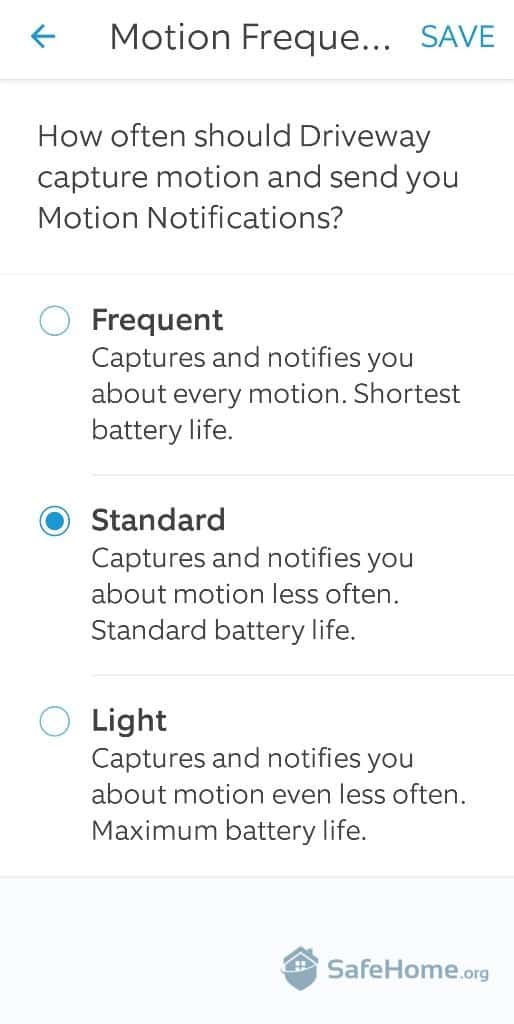
Ring Motion Frequency
Remember when we said we loved how customizable the Ring Stick Up Camera’s features are? That was mostly due to the motion settings. Thankfully, you can adjust what type of motion you’ll be alerted to, as well as what time of day to receive them (note that many indoor cameras don’t offer this!). And, as a bonus, you can also set up “zones” within the camera’s field of view to focus on or avoid.
Since we’d placed our Stick Up Camera on the first floor of our home where people are constantly moving, we were concerned the camera would inundate us with too many alerts. So we went into the app and adjusted our Motion Zones so that we wouldn’t receive notifications every time someone walked in the front door. That’s one problem solved!
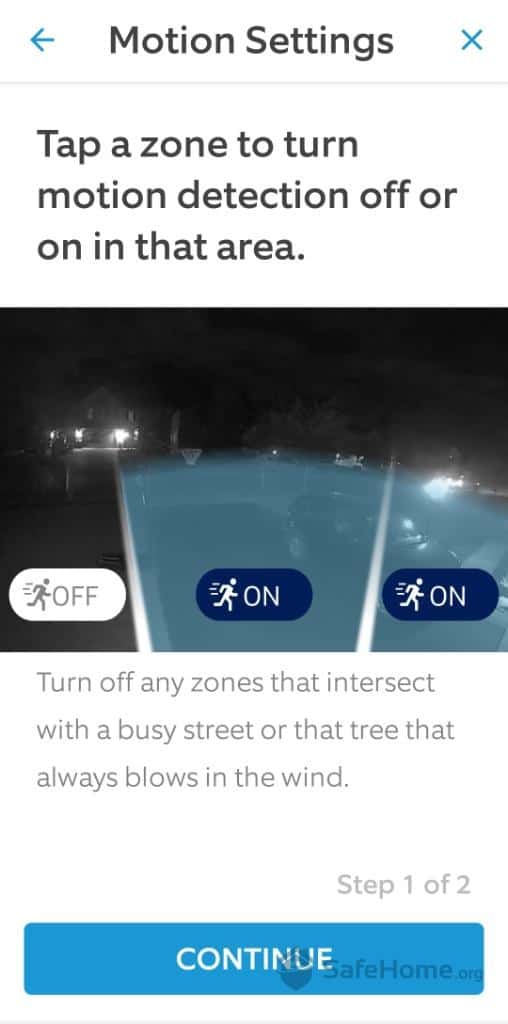
Ring Motion Zones
FYI: If you don’t want to go to the trouble of adjusting Motion Zones, you can also turn off motion alerts to that camera altogether.
Our Ring Stick Up Cam came equipped with 1080p HD video quality. While 1080p HD is today’s industry standard and nothing out of the norm, we did love the crisp and consistently clear resolution day and night, ensuring we never missed important events or activity.
After all, the more we can catch that naughty puppy of ours in the act, the better!
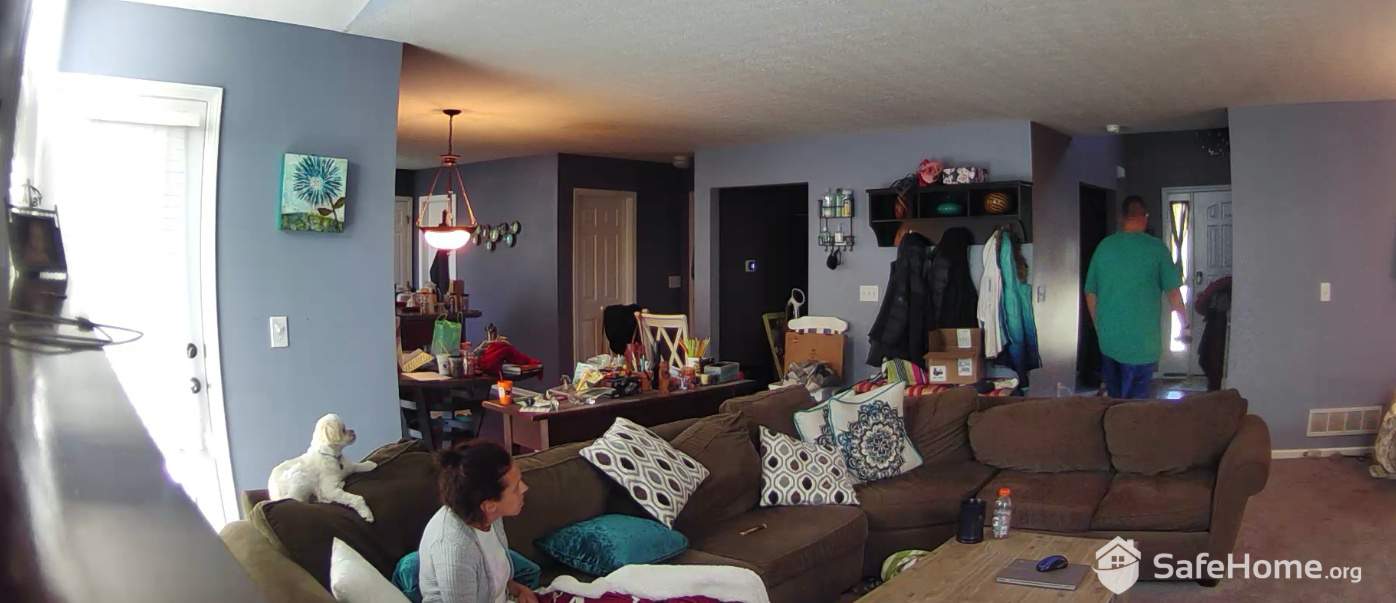
Ring Stick Up Cam Video Quality
We already knew Amazon owns Ring, so it only makes sense that Ring cameras are compatible with Amazon Alexa devices for smart home automation. Good for us, right?
Except for one tiny issue: Unfortunately, we don’t currently have an Alexa device setup in our home. We do have a Google Assistant, which Ring interacts with on a limited basis.
But if you do have an Alexa device – specifically one with a smart display, like Amazon Echo Show – then you can make all of this smart home technology3 work for you hands-free. You can say, “Alexa, show me my office” to view video on your Echo Show. Or, you can get voice notifications using Echo Dot. As far as systems that work with Alexa, we think Ring is up there with the best of them.
As a consistent leader in the marketplace, Ring’s relatively low prices are a big selling point. It’s one of the aspects we love about Ring; there’s something for the budget-conscious, as well as for the splurge-prone. Ring’s camera prices range from $59.99 for their compact Indoor Cam to $249.99 for their ultra-bright LED Floodlight Cam.
With Ring, we’re getting the same reliable features in every camera that we’ve come to know and love: clear 1080p HD video resolution, infrared night vision, a 130-degree field of view, and high-quality audio.
Here’s a detailed cost breakdown of Ring’s cameras:
| Ring Camera | Power source | Cost |
|---|---|---|
| Spotlight Cam Battery | Battery | $199.00 |
| Spotlight Cam Wired | Wired | $199.00 |
| Spotlight Cam Solar | Solar | $229.00 |
| Spotlight Cam Mount | Wired | $249.00 |
| Floodlight Cam | Wired | $249.00 |
| Stick Up Cam Battery | Battery | $99.99 |
| Stick Up Cam Wired | Wired | $99.99 |
| Stick Up Cam Solar | Solar | $148.99 |
| Indoor Cam | Wired | $59.99 |
In most security camera packages today, you get to choose how you want to store your footage. With Ring, options are simple: insert a micro SD card, or opt for one of Ring Protect’s subscriptions to store video on the cloud.
Unlike traditional security companies that require annual service agreements, Ring doesn’t require you to sign a contract. You can subscribe to a plan in order to save video and record activity, much like the way Arlo’s cameras worked in our full Arlo camera analysis. This model is becoming the standard in the industry, and we think you’ll appreciate the convenience and flexibility here.
You are, however, very limited in what you can do without a subscription, so we tend to recommend going with at least the Basic subscription plan if you have one or two cameras, and the Ring Protect Plus plan if you have three or more.
| Ring Subscriptions | Included Free | Ring Protect Basic | Ring Protect Plus |
|---|---|---|---|
| Instant Mobile Alerts | Yes | Yes | Yes |
| Live Video Streaming | Yes | Yes | Yes |
| Two-Way Talk | Yes | Yes | Yes |
| 60-Day Video History | No | Yes | Yes |
| Video Saving/Sharing | No | Yes | Yes |
| Snapshot Capture | No | Yes | Yes |
| 24/7 Professional Monitoring | No | No | Yes |
| Extended Warranty | No | No | Yes |
| Monthly Price | Free | $3 per month | $10 per month |
| Yearly Price | Free | $30 per year | $100 per year |
We already had the Ring Protect Plus plan for our four other Ring cameras, and we were able to seamlessly incorporate our Stick Up Cam into our existing plan. This flexibility is a key reason so many people (like us) become Ring loyalists.

Ring Protect Plus Plan
We feel comfortable joining in the praises of Ring, a brand that prides itself on making home security possible for almost anyone, because we are definitely “almost anyone.” We are working parents of young children in a Midwestern suburb, and safety is on our minds and hearts daily. We don’t have deep pockets, though, so we take value very seriously. Ring consistently ranks high in both value and performance, which basically means that you get a really well-made product for a reasonable price.
And beyond that, we just love how easy it is to customize all of Ring’s features to our needs. But keep in mind, we’re not saying this is a perfect camera; the Ring Stick Up Cam still trails behind some other cameras when it comes to advanced features like custom activity zones and facial recognition.
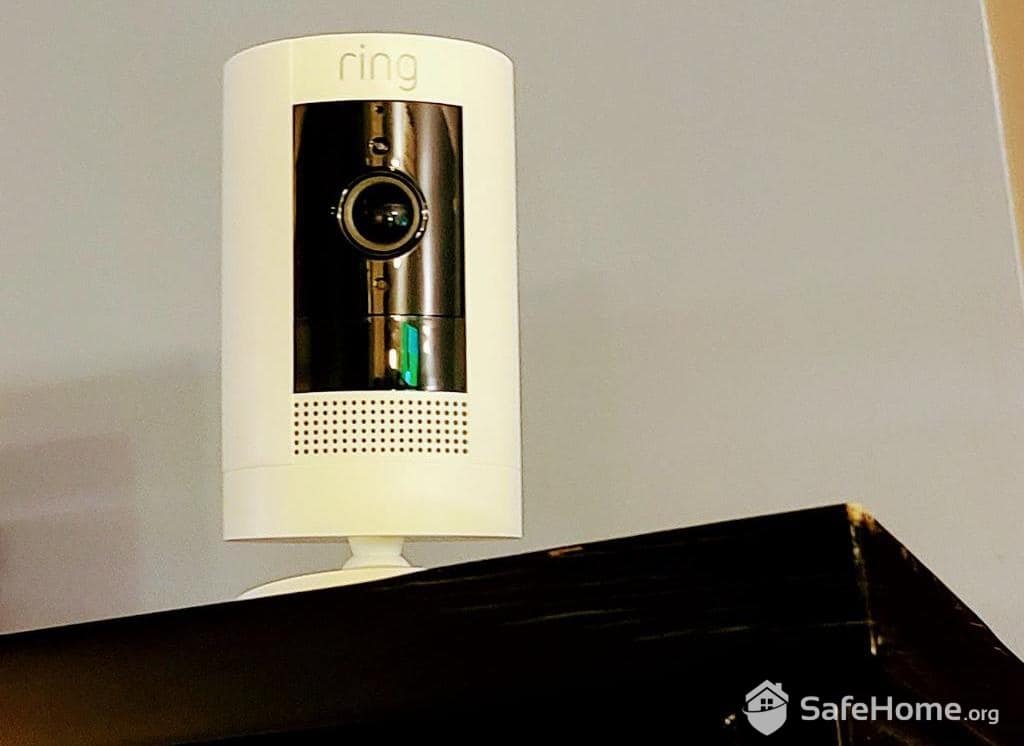
Ring Stick Up Cam on Shelf
The Nest Cam IQ, for example, boasts artificial intelligence-powered person detection that allowed us to distinguish between familiar faces in our home during our tests. Of course, AI is not a cheap feature; the indoor IQ model costs $299 and goes up from there. We’ve learned it’s often a “get what you pay for” scenario with security cameras; so if you want suped-up features, you’re inevitably going to pay for it.
You can connect your Ring camera to your Echo device by adding the Ring as a skill within your Alexa app. Download and open the Echo app, then follow the steps to link your Ring device. Once this is done, you can then activate and interact with your Ring device using voice commands by simply telling Alexa what you would like to do. For example, you can tell Alexa to arm your camera or, if you have an Amazon Echo Show, you can ask Alexa to show you the camera on its display.
You can connect your Ring camera to your Echo device by adding the Ring as a skill within your Alexa app. Download and open the Echo app, then follow the steps to link your Ring device. Once this is done, you can then activate and interact with your Ring device using voice commands by simply telling Alexa what you would like to do. For example, you can tell Alexa to arm your camera or, if you have an Amazon Echo Show, you can ask Alexa to show you the camera on its display.
While not every interaction we’ve had with Ring customer service has been perfect (and we’ve needed them a few times), they usually get us to the right answer. Most of our issues were resolved using Ring’s customer support articles and guides on their support page. And if we couldn’t find answers there, we always had the option of calling Ring’s customer service hotline or getting help via live chat or email.
It depends on your needs and preferences. You don’t have to purchase a monthly service package for the Ring to work. But if you want to harness the full menu of Ring’s features, you’ll want to at least get the Basic subscription for $3 per month or $30 for the year per device. Or, you could go bigger and choose the Protect Plus option for $10 per month or $100 for a year for all of your Ring cameras.
The Stick Up Cam is offered in black or white. We chose white, because it blends in better with the style of our home. But if we were trying to place our camera in a more discreet location, like a garage, we might have chosen black.
Montag, A. and Berger, S. (2019, Feb. 22). Amazon bought ‘Shark Tank’ reject Ring last year – here’s what the founder says about Jeff Bezos. CNBC.
https://www.cnbc.com/2018/02/27/amazon-buys-ring-a-former-shark-tank-reject.html
Cooney, M. (2020, April 6). What is power over Ethernet (PoE)? Network World. https://www.networkworld.com/article/2328615/the-power-over-ethernet.html
Bowman, Jordan. (2020). How to Transform Your House into a Smart Home. New York Magazine/The Strategist.
https://nymag.com/strategist/article/best-smart-home-devices.html